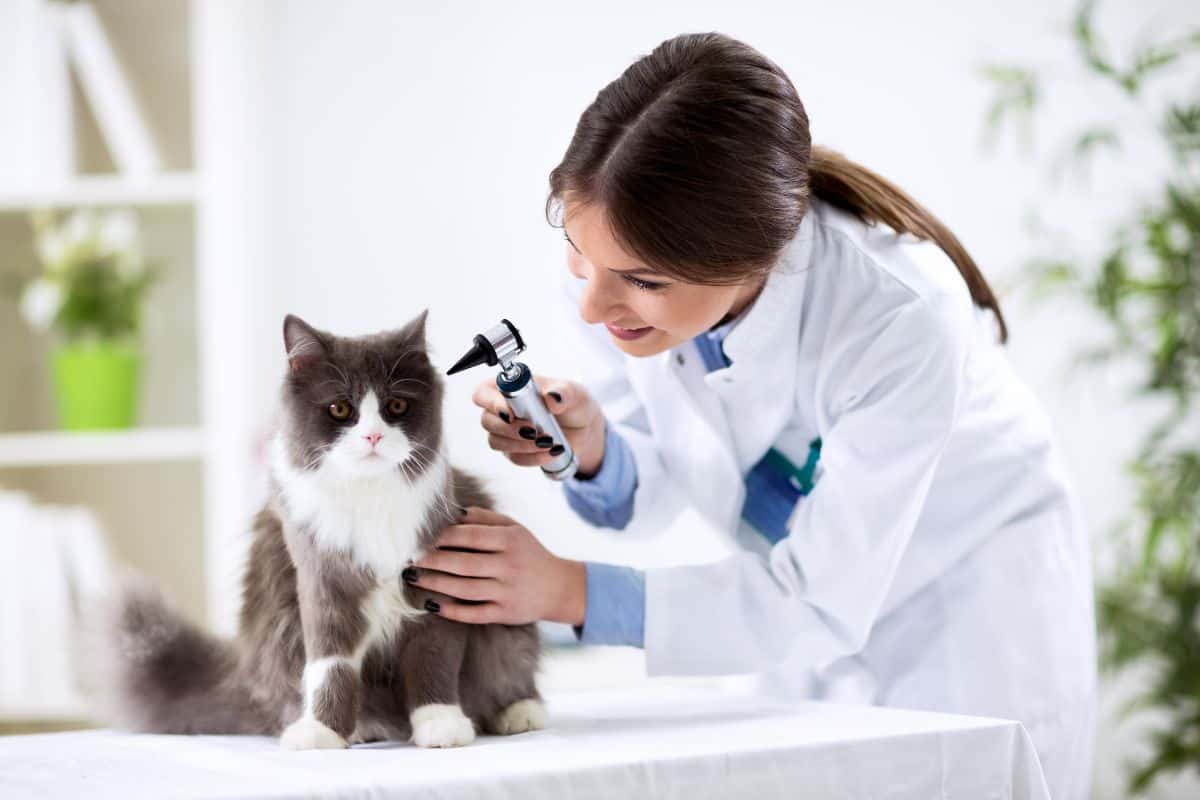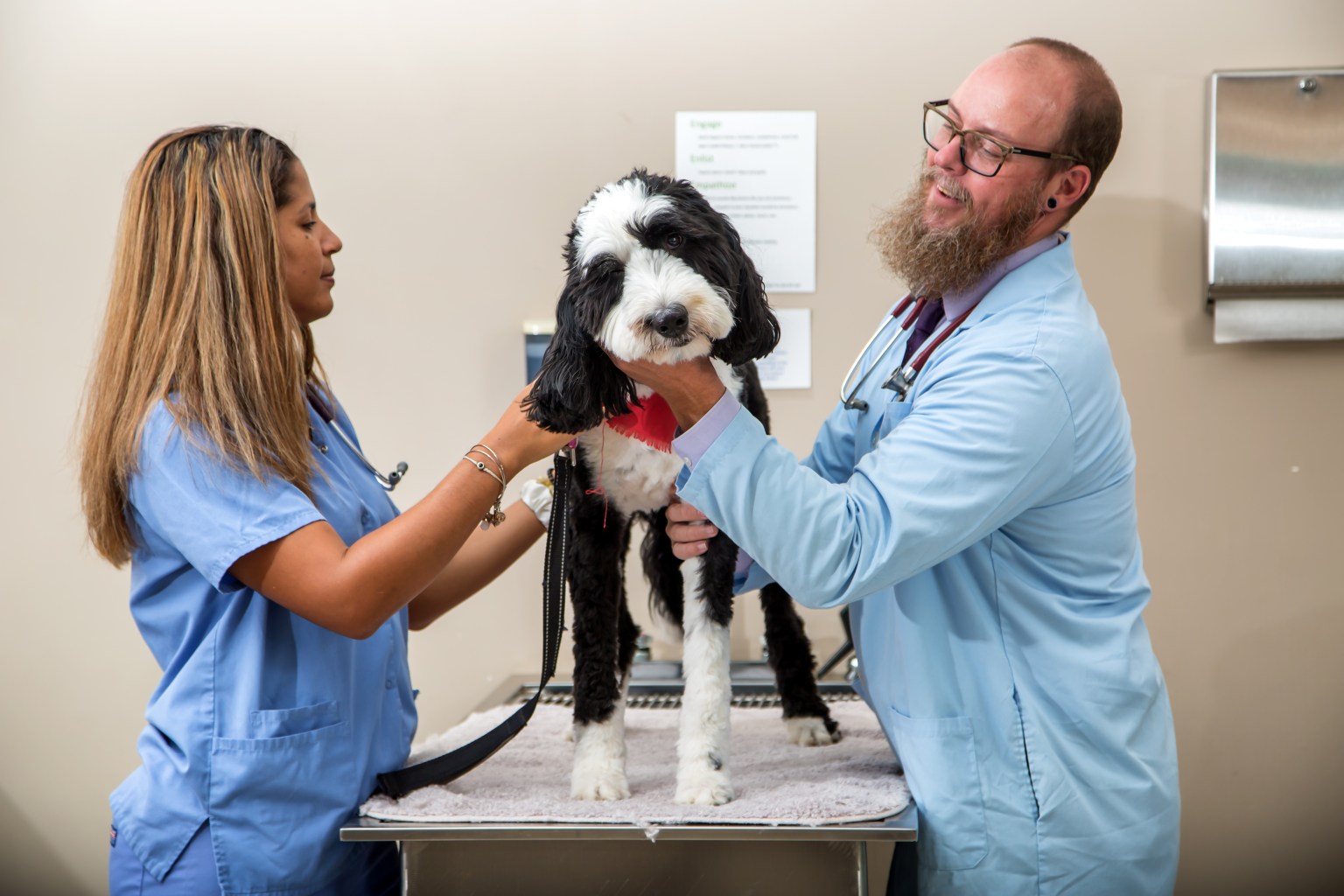The Value of Early Detection: Insights From a Veterinary Oncologist
Early detection of cancer cells in pet dogs is a vital topic for pet dog owners and veterinary professionals alike. Vet oncologists emphasize the relevance of recognizing refined indications that might show major health problems. Usual symptoms typically go unnoticed until they intensify. Comprehending these very early caution indicators and developments in diagnostic methods can make a considerable difference. What steps can pet proprietors take to improve their family pets' chances of early diagnosis and far better therapy end results?
Recognizing Cancer Cells in Pet Dogs: Common Kinds and Signs And Symptoms
While lots of family pet owners may not realize it, cancer cells is a significant wellness problem impacting animals, a lot like it does in people. Usual kinds of cancer cells in family pets consist of lymphoma, mast cell tumors, osteosarcoma, and mammary growths. These hatreds can show up in various means, relying on their location and kind. Symptoms usually include unusual weight management, persistent vomiting, modifications in cravings, or unusual lumps and bumps. Family pets might also exhibit lethargy, problem breathing, or hesitation to workout, which can indicate underlying health and wellness concerns. Early signs can be subtle, making it necessary for pet owners to be observant of their family pets' actions and physical problem. Recognizing these common types and connected signs can equip proprietors to look for vet care without delay, possibly resulting in earlier medical diagnosis and treatment options. Acknowledging the indications of cancer in family pets is a crucial action in the direction of enhancing their health and wellness and top quality of life.
The Duty of Vet Oncologists in Very Early Discovery
Vet oncologists play a crucial duty in the very early discovery of cancer cells in family pets, as their specialized training furnishes them with the skills required to identify subtle indicators that might be forgotten by basic experts. They make use of a mix of scientific experience and progressed analysis tools to examine clients thoroughly - Veterinary Oncology Services. By recognizing early signs and symptoms and danger elements, oncologists can direct pet proprietors towards timely interventions, raising the opportunities of effective treatment
Vet oncologists typically collaborate with basic experts to create screening procedures tailored to specific breeds or age teams, enhancing the effectiveness of early discovery efforts. They inform pet proprietors on the importance of normal examinations and recognition of changes in actions or physical condition. With these aggressive steps, vet oncologists significantly add to improving results for pet dogs diagnosed with cancer, stressing the vital nature of their duty in veterinary health care.
Advances in Diagnostic Techniques for Animal Cancer Cells
Advancements in diagnostic methods have actually markedly enhanced the ability to discover cancer in family pets at earlier phases. Methods such as advanced imaging, consisting of MRI and CT scans, offer comprehensive inner views, allowing vets to determine lumps that may not be apparent. Additionally, the growth of minimally invasive treatments, such as fine needle aspirates and biopsies, makes it possible for precise sampling of cells for histopathological analysis with minimized stress and anxiety for the animal.
Arising molecular diagnostics, including hereditary screening and biomarker identification, are changing the landscape of veterinary oncology. These methods can determine specific cancer cells kinds and anticipate reactions to treatment, assisting in customized care strategies. In addition, innovations in research laboratory methods, such as liquid biopsies, are beginning to supply non-invasive choices for keeping an eye on growth development and therapy effectiveness. Collectively, these technologies stand for a considerable jump ahead in veterinary medication, emphasizing the essential function of early discovery in enhancing outcomes for animals click now detected with cancer.
Just How Animal Owners Can Recognize Warning Signs
Just how can family pet owners end up being watchful in identifying prospective indication of cancer cells? Awareness of physical and click now behavior modifications in pet dogs is essential. Usual indicators include unusual sleepiness, loss of hunger, or abrupt weight modifications. Pet dog owners need to also pay interest to persistent throwing up or diarrhea, which might signify underlying issues.
Modifications in the skin, such as swellings, bumps, or sores that do not recover, warrant instant vet interest. Additionally, proprietors ought to note changes in alcohol consumption practices, raised urination, or trouble in breathing. Unusual hopping or pain may additionally be indicators of more major conditions.
Routine vet exams can aid identify these warning indications early. By keeping a close monitoring of their pet dogs' wellness and behavior, owners can play an essential role in early detection, potentially causing better outcomes should cancer be diagnosed. Acknowledging these indications may substantially influence an animal's high quality of life.
The Effect of Early Detection on Treatment Outcomes
Early discovery of cancer cells in pet dogs plays an important role in identifying treatment outcomes, as it often enables a wider variety of healing alternatives. When cancer cells is identified in its onset, veterinarians can execute less intrusive therapies, raising the chance of effective treatment. Early-stage cancers cells here are the findings may also respond far better to radiation treatment or radiation, leading to improved survival rates and overall lifestyle for the family pet.
Furthermore, punctual medical diagnosis promotes a more tailored treatment strategy, straightening with the specific needs of the animal. This can include individualized medication routines or medical treatments that are much less hostile. On the other hand, late-stage discovery commonly causes minimal choices, extra aggressive therapies, and poorer prognoses. The importance of very early detection can not be overstated; it basically alters the trajectory of therapy, making it vital for pet owners to continue to be alert for any kind of signs of ailment in their beloved friends.
Frequently Asked Concerns

How Can Diet Impact Cancer Threat in Pet Dogs?
Diet plan considerably affects cancer cells threat in animals, as particular nutrients and food types can either promote or inhibit tumor growth. A balanced, nutrient-rich diet regimen may help lower the probability of establishing cancer in animals.
Are Particular Types A Lot More Prone to Cancer?
Specific pet breeds, such as Golden Retrievers and Fighters, display greater cancer sensitivity due to genetic proneness. Some feline breeds additionally reveal enhanced cancer dangers, highlighting the relevance of breed-specific health understanding amongst animal proprietors.

What Are the Costs Connected With Very Early Cancer Detection?
The prices linked with early cancer cells detection can vary greatly, including analysis tests, appointments, and prospective therapies - Veterinary Cancer Specialist. Investing in these solutions commonly results in far better health results, inevitably saving money on extra comprehensive future clinical expenditures
Can Vaccinations Avoid Cancer Cells in Pets?


Injections might decrease the threat of certain cancers cells in animals, specifically those linked to viral infections. Nonetheless, their performance differs, and pet proprietors must speak with vets for customized guidance relating to inoculation and cancer avoidance approaches.
Exactly How Often Should Animals Be Screened for Cancer?
Family pets ought to normally be evaluated for cancer cells each year, especially as they age or if they exhibit risk elements. Routine vet examinations can assist determine prospective problems early, enhancing treatment outcomes and overall health monitoring.
Early discovery of cancer cells in pet dogs is a crucial topic for family pet owners and vet experts alike. Early indicators can be subtle, making it necessary for pet dog proprietors to be watchful of their pet dogs' habits and physical problem. Vet oncologists play a vital function in the early discovery of cancer cells in family pets, as their specialized training furnishes them with the skills necessary to identify refined indicators that might be ignored by general specialists. By maintaining a close monitoring of their family pets' wellness and habits, owners can play a vital function in early discovery, possibly leading to far better results should cancer cells be identified. Early detection of cancer in animals plays an important duty in figuring out therapy end results, as it commonly permits for a broader range of restorative options.